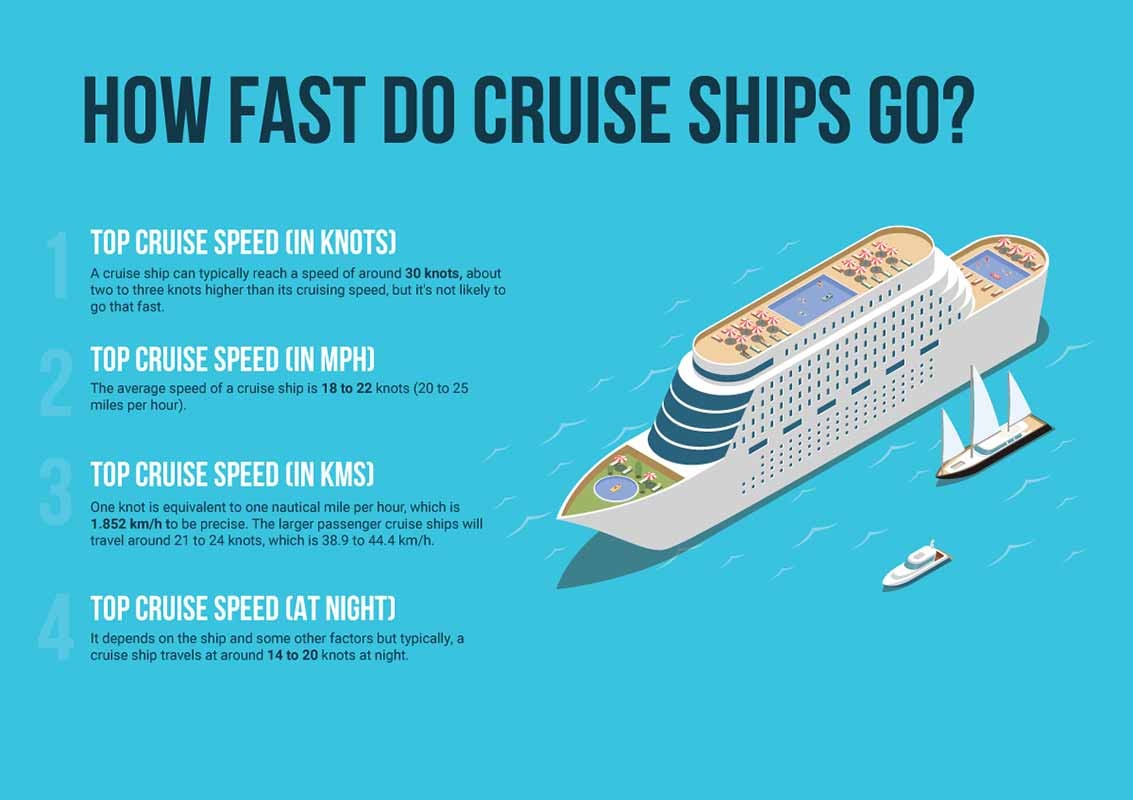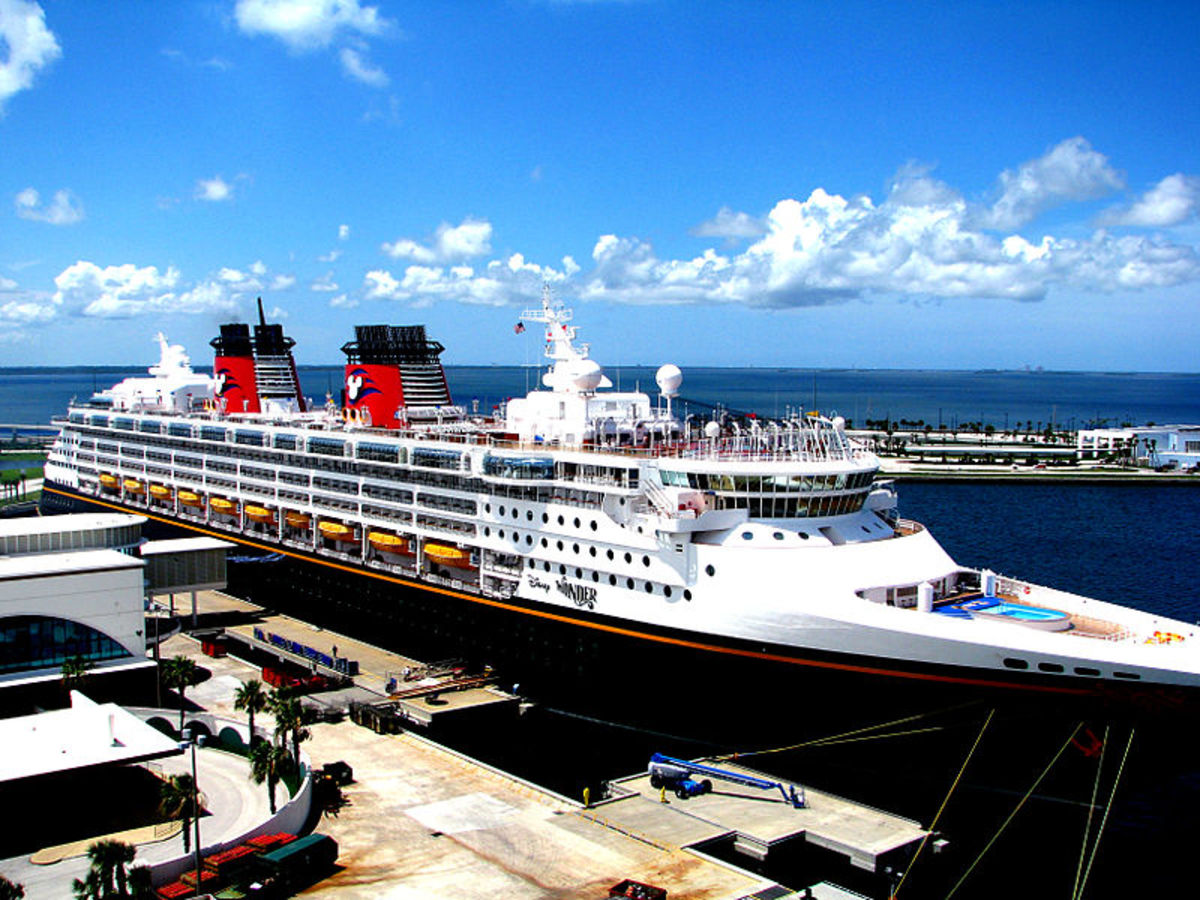Table Of Content

The USS Constitution, for example, capped out at 13 nautical miles per hour. Nonetheless, have you ever wondered at what speed cruise ships actually sail and the reasoning behind it? You may be surprised to learn that cruise ships can go faster than they actually do but choose not to. Here, I'll cover how cruise ship speed is measured, how to calculate your ship's speed in miles per hour and some considerations that could affect how fast you're going. United States shattered the record for the fastest crossing of the Atlantic by a passenger ship, steaming from New York to Le Havre in less than four days.
How fast is a knot in miles per hour?
A larger number of people onboard can generate additional vibrations and affect the stability of the ship, making it necessary to maintain a lower cruising speed for a smoother journey. The world's second-fastest cruise ship is MS Voyager (last named Costa Voyager), now owned and operated by a Chinese company. QM2's Transatlantic crossing distance is almost 3,000 nautical miles, or ~3,400 statutes/normal miles (5,500 km), and this is done in less than 7 days. While your car could easily leave a cruise ship in its wake on land, in the open ocean, it’s a whole different ball game. On average, cars can go about miles per hour, while cruise ships go around miles per hour.
How fast do Royal Caribbean ships go?
One of the most common questions curious travelers ask is, “How fast does a cruise ship go? ” In this extensive manual, we will immerse ourselves in the captivating realm of cruise ship speeds, investigating the various elements. Influence their velocity, and revealing the fastest cruise ships afloat. So, whether you’re cruising during the day or at night, the average speed of a modern cruise ship remains consistent. Most cruise ships have the capability to maintain their cruising speed of around 20 knots, providing a steady and comfortable journey for all onboard.
Faster Ships

If there’s a storm in the area, the captain might choose to sail faster or slower than a normal pace to ensure smooth sailings. Captains will also adjust the cruise ship speed for passengers to enjoy a specific landmark or scenery. For example, while sailing through Alaska, you might find the ship sailing much slower than normal during the Inside Passage. While speed is an essential aspect of cruise ship travel, it’s important to consider the environmental impact of these vessels. The faster a ship goes, the more fuel it burns, contributing to air pollution and greenhouse gas emissions. Additionally, high-speed travel can also cause noise pollution and disturbance to marine life.
This pragmatic approach does not detract from a cruise ship’s marvel; instead, it showcases an evolution of priorities within the industry. Cruise liners today promise a seamless blend of leisurely pace and punctuality, ensuring each voyage is enjoyable and respects the intricate scheduling that modern sea travel demands. One of the fastest cruise ships in the world is Cunard’s Queen Mary 2, which can reach top speeds of up to 30 knots.
Sometimes, the Captain will even slow a ship down to everyone can see a sunset or other passing scenery. Similarly, a ship's displacement, condition of the hull and propeller, or draft can all factor into a ship's top speed. They tend to have a longer, pointed bow that helps them navigate high rising ocean waves. They also have an extra thick hull to maintain stability in rough conditions. But "knot" isn't simply a misspelled nickname for "naut" (as in nautical mile). Its origins are far more literal, according to the United States' National Ocean Service.
Is the cruise industry ready for the rise in solo travel?
Some innovations include the development of hybrid and electric propulsion systems, the use of cleaner fuels, and advances in the hull design to reduce drag and improve fuel efficiency. These efforts aim to balance the need for speed with the industry’s responsibility to protect the environment, ensuring a more sustainable future for cruise ship travel. When comparing modern cruise ships to historic vessels, it’s interesting to see how far the industry has come. For instance, a comparison of the Titanic and modern cruise ships reveals significant advancements in size, design, safety, and speed over the past century. Massive cruise ships can reach up to 30 knots, equivalent to approximately 34.5 miles per hour on land. Their size and power allow them to navigate various sea conditions efficiently.
Cruising Speed
Ships might have to sail at higher speeds to outrun potential storms or rough waters. Conversely, they might sail more slowly if they find themselves in choppy swells. Cruise ship fuel efficiency varies based on factors such as itinerary and speed.
Carnival’s Faster to the Fun: Are the priority cruise perks worth it? - The Points Guy
Carnival’s Faster to the Fun: Are the priority cruise perks worth it?.
Posted: Tue, 01 Aug 2023 07:00:00 GMT [source]
While speed may not be the main selling point for a cruise, it’s still interesting to compare and see how different ships stack up against each other. The amount of fuel a ship carries can determine how fast it can go and for how long. A heavier ship will require more fuel to maintain speed, while a lighter ship can go faster with less fuel.
This was achieved in 1990 by Hoverspeed Great Britain, with a non-stop crossing of 79 hours 54 minutes, averaging 36.6 knots and Incat were awarded the trophy by the Hales Trophy Committee. Eight years later this record was broken by another Incat vessel, Catalonia, and again the following month by Cat-Link V in 68 hours and 9 minutes (41.28 knots). While these speeds might not seem particularly fast, they are more than sufficient to cover long distances while providing passengers with a smooth and enjoyable ride. The emphasis is on creating a tranquil and soothing experience, rather than racing to a destination. This air lubrication system allows the ship to float on air, with millions of tiny bubbles created under the hull to reduce drag and increase fuel efficiency. Depending on the exact ship, cruise ships can get up to a good speed given the need.
Cruise help - for the "normal" speed values, multiply knots by 1,15 (mph), or 1,852 (kph). Below, you may compare the average passenger ship speed in the huge fleets of several big cruise ship companies and lines. Generally, modern cruise ships don't have to be fast - it's not necessary at all. And the latest trend is cruise ships also must be more and more fuel-efficient. Ah, the Royal Caribbean, they’re not just royal by name, but also by speed.
Cruise ships need to strike a balance between speed and fuel efficiency. The faster a ship travels, the more fuel it consumes, which can significantly increase operational costs. Cruise lines aim to find the optimal speed that allows them to cover the desired distance in a reasonable amount of time without excessively consuming fuel.
On average, the Royal Caribbean cruise ships go a comfortable pace of about knots. But remember, this can fluctuate based on factors like weather, ocean conditions, or if the captain’s late for his tea time. Cruise Ship Speed refers to the rate at which these impressive maritime giants move through the water. It’s important to note that cruise ships don’t possess the same agility as smaller boats. Instead, they prioritize stability, safety, and the comfort of their passengers.
Today’s cruise ships are capable of far faster speeds, thanks to huge advancements in technology. As a result, an average large cruise ship travels at cruising speeds greater than the maximum speed of a historical wooden vessel. The cruise itinerary and the distance between ports of call also play a significant role in determining the speed of a cruise ship. Cruise ships are designed to reach each port on time, ensuring a seamless and punctual experience for passengers. Therefore, ships often adjust their cruising speed based on the distance they need to cover and the specific time constraints of the itinerary. While cruise ships have the potential to reach higher speeds, they usually operate at their average cruising speed for efficiency and passenger comfort.
No comments:
Post a Comment